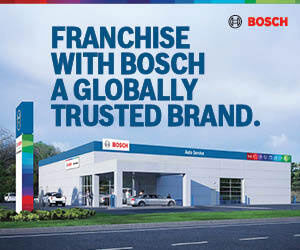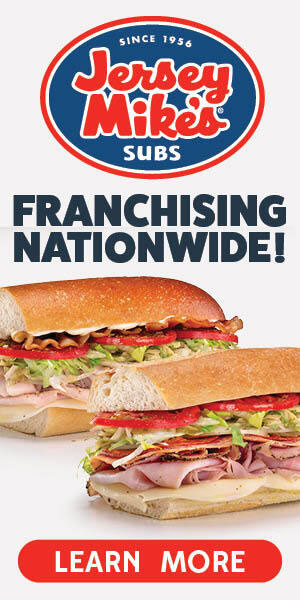Digital Ordering: Welcome to the Bring-Your-Own-POS World

Digital ordering has gone through several waves of evolution over the past 15 years, starting with online ordering as the only ordering channel and now spanning multiple ordering channels, with mobile shining in the spotlight. But is mobile the key to digital ordering success? The brief history of digital ordering helps to shed light on the rise of mobile and its role in digital ordering today and in the future.
Digital ordering in the restaurant industry began with pizza. In the late 1990s and early 2000s, the big three (Domino's, Pizza Hut, and Papa John's) found a new way to capitalize on the rise of home dial-up by letting hungry customers place orders over the web. Online ordering was a natural fit for pizza customers, who were used to calling their local store and placing orders for home delivery. Instead of dialing in - only for the phone to ring and ring, be put on hold, or get the dreaded busy signal - pizza lovers could now log on, pull up the menu and pricing of their local store, build their customized order, and submit it for delivery.
The whole process was quite similar to a typical e-commerce purchase. Ordering online from amazon.com would kick off a process of warehouse employees assembling and packing an order and then shipping it from the warehouse to the customer's front door. Ordering online from dominos.com would kick off a process of restaurant employees assembling and boxing an order and then delivering it from the local store to the customer's front door.
The convenience of the consumer experience was only half of the story. The increased efficiency and accuracy of the operational experience was the other half. Together, these created both an improved customer experience and a more profitable restaurant operation. It's no surprise that the big three have all seen digital ordering climb to more than 50 percent of their transactions, becoming their primary business channel.
Serving up a "VIP experience"
Not all food holds as well as pizza and enjoys such delivery demand, so what about digital ordering for non-pizza restaurants? Fast casual brands saw a different opportunity for digital ordering. Instead of focusing on how digital ordering could improve the experience of the food going to the customer (delivery), they focused on how digital ordering could improve the experience of the customer going to the food (takeout).
In an effort to compete with fast food brands on speed of service and convenience while still providing high-quality, made-to-order products, fast casual brands saw that digital ordering could make them faster than their fast food competitors. Customers could order online and schedule a pickup time. The online ordering platform could fire the order into the kitchen at the right time for it to be prepped and bagged at the perfect moment: synchronized with the customer's arrival at a special pickup area where they could have a VIP experience and skip the line to collect their order.
Contemporaneous with the rise of fast casual brands, Steve Jobs introduced the iPhone in June 2007, and mobile took a great leap forward. The reality of American consumers walking around with web-enabled, location-aware devices in their pockets became very real: smartphone ownership will hit 85 percent by the end of the year. The smartphone has become the most personal technology device we have ever known, with owners checking their phones 150 times per day. And beyond just owning smartphones, customers familiar with services like Uber, which allow them to magically hail a car to their precise location at the tap of their screen, have come to view smartphones as remote controls for the world around them.
The final - and largest - foodservice frontier
This mobile shift has taken digital ordering to its final foodservice frontier: the majority of the restaurant industry, represented by coffee and fast food brands. Many thought that digital ordering for coffee - an extremely perishable product -was crazy in digital ordering's early days. Not so today: Starbucks just rolled out its "Mobile Order & Pay" initiative in 20 more states, following successful market tests in Portland and Seattle.
In the spirit of the observed exponential growth curve of technology, some suggest that the mobile-led digital ordering of today will propel digital ordering to more than 50 percent of all transactions at non-pizza restaurants by 2022 - that is, in half the time it took pizza restaurants to reach 50 percent digital.
Why is mobile so key to digital ordering success? Three main characteristics of mobile make it distinct from online ordering:
- Smartphones are always with us, on our physical person at all times of the day (83 percent of Millennials sleep with their smartphone within reach). That opens up the ability to use the smartphone to order at any time, not just when one is sitting at an Internet-connected computer.
- Digital ordering apps are housed on the customer's smartphone, and so maintain the customer's logged-in state that gives them access to favorite or past orders, with their payment credentials saved securely on file. This means a more convenient ordering experience that requires fewer clicks, which makes many customers prefer ordering through a mobile app - even when they're sitting at an Internet-connected computer.
- Combined with the smartphone being with the customer at the time just before and at pickup, the fact that the smartphone can communicate its location back to the digital ordering service (and thus stay in sync with in-store operations) enables reimagined experiences for curbside pickup and delivery for restaurants of all kinds.
Despite the ubiquity of mobile, one must remember that desktop ordering still has its place. Catering orders and invitation ordering (one customer starting an order and inviting a large group to join that order, e.g., for a business meeting) are best experienced on a larger screen. And interfaces for in-car navigation systems, smart TVs, in-store kiosks, gaming systems, call centers, and wearables all represent emerging opportunities for digital ordering. Digital ordering is about letting customers truly order from anywhere in the new bring-your-own-POS world.
This article first appeared in Mobile Payments Today.
Noah Glass is the founder and CEO of Olo, a pioneer in online ordering since 2005. Clients include Five Guys Burgers and Fries, Which Wich, Cousins Subs, Noodles & Company, and Cold Stone Creamery. Olo also operates gomobo.com, a "skip the line" ordering service for restaurants.
Share this Feature
Recommended Reading:
| ADVERTISE | SPONSORED CONTENT |
FRANCHISE TOPICS
- Multi-Unit Franchising
- Get Started in Franchising
- Franchise Growth
- Franchise Operations
- Open New Units
- Franchise Leadership
- Franchise Marketing
- Technology
- Franchise Law
- Franchise Awards
- Franchise Rankings
- Franchise Trends
- Franchise Development
- Featured Franchise Stories
| ADVERTISE | SPONSORED CONTENT |








 The franchise listed above are not related to or endorsed by Franchise Update or Franchise Update Media Group. We are not engaged in, supporting, or endorsing any specific franchise, business opportunity, company or individual. No statement in this site is to be construed as a recommendation. We encourage prospective franchise buyers to perform extensive due diligence when considering a franchise opportunity.
The franchise listed above are not related to or endorsed by Franchise Update or Franchise Update Media Group. We are not engaged in, supporting, or endorsing any specific franchise, business opportunity, company or individual. No statement in this site is to be construed as a recommendation. We encourage prospective franchise buyers to perform extensive due diligence when considering a franchise opportunity.